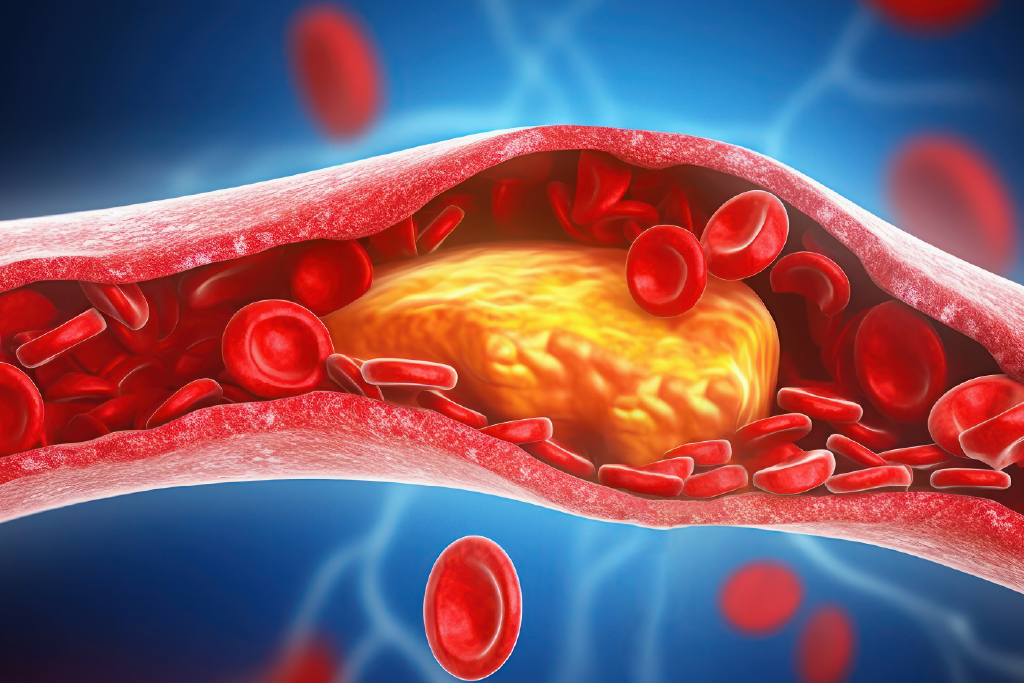Articles

High Cholesterol Levels in the Blood
Everything you need to
know about high cholesterol levels in the blood, accompanying symptoms, and
treatment.
What is
Cholesterol?
Cholesterol is a waxy,
fat-like substance that the body needs to perform many functions normally.
However, high levels of cholesterol in the blood can pose a serious risk to
human health.
Cholesterol travels in
the blood attached to proteins called lipoproteins, and there are
several types. The most important are:
- Low-Density Lipoprotein (LDL):
Known as “bad cholesterol,” it carries cholesterol throughout the body and can accumulate on artery walls, causing them to harden and narrow. - High-Density Lipoprotein (HDL):
Known as “good cholesterol,” it transports cholesterol from the cells to the liver where it can be broken down and eliminated.
Functions of
Cholesterol
- Helps build certain hormones and
synthesize vitamin D
- Plays a role in producing bile acids that
aid in digestion
- Contributes to building cell membranes
Normal Cholesterol
and Lipoprotein Levels
For Adults:
|
Type |
Optimal Level |
|
Total Cholesterol |
< 200 mg/dL |
|
LDL (Low-Density
Lipoprotein) |
< 100 mg/dL |
|
HDL (High-Density
Lipoprotein) |
> 60 mg/dL |
For Children:
|
Type |
Optimal Level |
|
Total Cholesterol |
< 170 mg/dL |
|
LDL (Low-Density
Lipoprotein) |
< 110 mg/dL |
|
HDL (High-Density
Lipoprotein) |
> 45 mg/dL |
Risk Factors That
May Lead to High Cholesterol
- Being overweight or obese
- Leading a sedentary lifestyle
- Smoking
- Having diabetes
- Aging
- Following a diet high in saturated fats
- Genetic factors and ethnicity
Complications
Resulting from High Cholesterol
- Heart disease, such as:
- Heart attack
- Artery blockage
- Angina (chest pain)
- Stroke
How to Treat High
Cholesterol
In addition to
medication, lifestyle changes are essential for effective treatment, including:
- Following a balanced, healthy diet as a
long-term lifestyle, and weight loss if overweight
- Engaging in a regular exercise routine,
such as walking at least 30 minutes daily
- Quitting smoking
- Reducing sugar intake
General Tips for a
Balanced Diet
- Eat 4–5 servings of vegetables and 2–3
servings of fruit daily
- Limit fast food consumption
- Avoid foods high in saturated fat and
hydrogenated oils like fried foods and butter
- Choose foods rich in unsaturated fats such
as vegetable oils and raw nuts
- Remove chicken skin when cooking
- Some foods, like garlic, may help lower
cholesterol
Recommended and
Limited Foods
|
Food Group |
Recommended
Foods |
Foods to Limit
or Avoid |
|
Carbohydrates |
Bran bread, oats |
Sugar-added sweets
like frosted cake |
|
Dairy |
Skimmed milk |
Full-fat milk |
|
Fruits |
Apples, bananas,
peaches, plums, fresh fruit |
Fruits cooked with
fat, like fried bananas |
|
Vegetables |
Fresh, boiled, or
grilled vegetables (e.g., carrots, zucchini) |
Fried vegetables
like cauliflower, zucchini, French fries |
|
Fats |
Olive oil, raw nuts |
Butter, roasted nuts |
|
Proteins |
Skinless chicken,
grilled fish, veal, legumes (e.g., lentils, chickpeas) |
Fried meats, fish,
chicken; high-fat meats; processed meats like sausages |
References:
